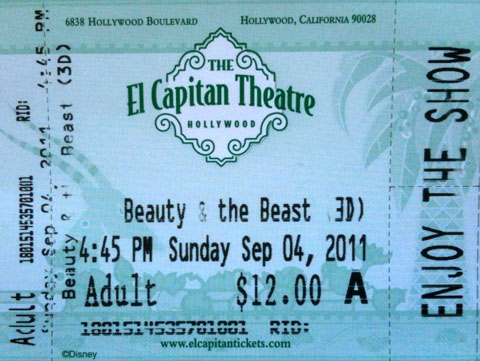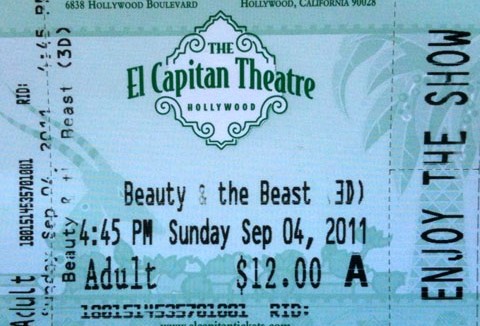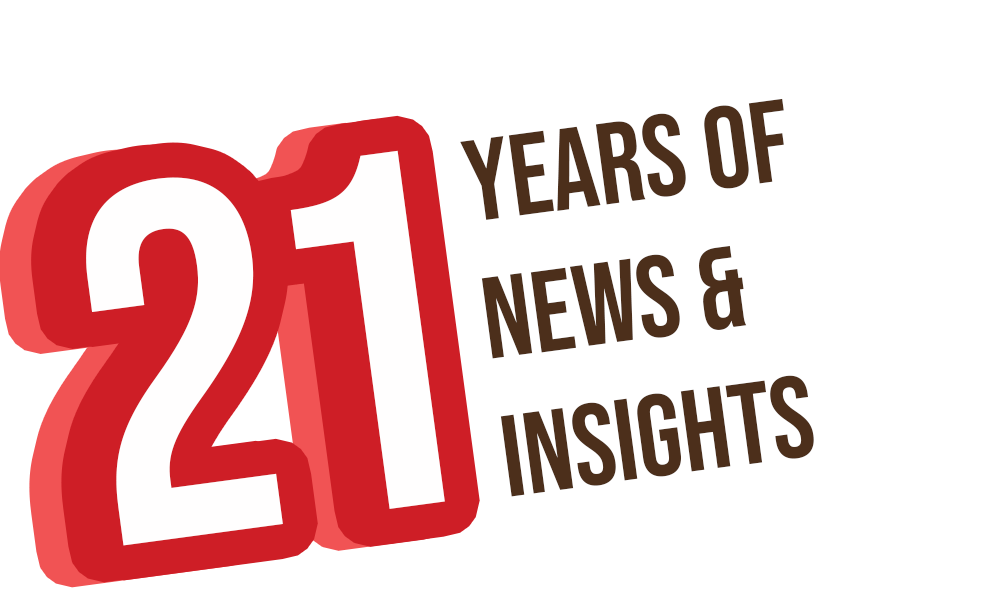

REVIEW: 3D “Lion King” and 3D “Beauty and the Beast”

Two years ago, at the big Hall H Disney presentation at the San Diego Comic Con – the year Miyazaki was there – John Lasseter presented a clip from the forthcoming Beauty and The Beast 3D conversion. I hadn’t heard about this project, but was strangely intrigued with the idea of 3D conversion of previously flat 2D cartoons. I always loved Disney’s Melody, and Paramount’s Boo Moon and Popeye The Ace of Space are two great examples of what a 3D cartoon can look like if done properly (I am not as impressed with Lantz’ Hypnotic Hick and Warners’ Lumberjack Rabbit). I even enjoyed the 3D aspects of the otherwise awful Starchaser: The Legend of Orin.
I was particularly enthused when Lasseter introduced the clip – but became less so as he discussed the process. Here’s how I recall his introduction, and what I was thinking during it…
Lasseter: “There were 3D cartoons done in the 1950s…”
My Thoughts: “Yes there were. And they looked great – like old Viewmaster slides come to life!”
Lasseter (in a negative way): “…but they were old fashioned and looked like Viewmaster slides…”
My Thoughts: “But… but… that was COOL!”
Lasseter: “Luckily, we figured out a new way to create 3D out of hand drawn cartoons…”
My thoughts: “But… but… it doesn’t need a “new way”. MELODY looked incredible…”
Lasseter: “Instead of flat art, we’ve figured out a way to round the edges…”
My thoughts: “That doesn’t sound good…”
Lasseter: “This isn’t your father’s 3D cartoon…”
My thoughts while watching the clip: “Oh. My. God.”
I don’t have problems watching 3D movies. I don’t get headaches, my eyes don’t tear… but watching this clip gave me a headache and hurt my eyes. Needless to say I was not surprised when the film didn’t open theatrically as originally planned.
Cut to 2011 – and this past week the 3D Beauty and The Beast opened at the El Capitan Theatre sans almost any publicity. I simply had to go see it over the weekend. I was also invited to a screening of the 3D Lion King at the Disney Studio yesterday. Here’s my assessment of how both fare in 3D form.
Beauty and The Beast – I’m not going to review the film itself, but suffice to say it was a pleasure to see it again on the big screen. The screenplay, direction, and vocal performances are even better than I remembered them. The animation was/is, of course, top notch. But there was something wrong here… the drawings of the characters, particularly in the first third of the film, looked awful. What did they do? Re-trace the animation to get the 3-D effect? There was a funky, scratchy-tracing “look” to the characters, particularly their outlines. It seemed to get better once we are in the enchanted castle – either that or I got used to it. The 3-D effect itself was pretty good. It was NOT the “rounded edge” version that Lasseter touted at Comic Con. In fact, unlike every live action or CG animated 3D film I’ve seen the past few years, the 3D “effect” didn’t wear off after the first ten minutes. It was quite a 3D Viewmaster version all throughout. Would I recommend seeing it on the big screen? No. The character designs of the townspeople and the overall “traced” look hurts the visuals. Somehow the 3D highlights these flaws… I went home a re-watched several scenes on the “Diamond Edition” DVD and the film looks much better on TV. Maybe the 3D home version plays better too. Final assessment: Disney was right not to release this nationwide – but the 3D is a lot better than I thought it would be. It doesn’t hurt the film, but doesn’t help it either.
The Lion King – The folks at Disney sent me this slideshow (below) that attempts to explain the 3D conversion process. I admit I still don’t completely understand it.
I’ve now seen The Lion King in 3D and again, it was great to revisit this film after so many years. The finished artwork and visuals are superior to preceding films of the era and clearly more care was taken to convert this film to 3D. I only noticed the “scratchy tracing” look in the earliest part of the film. The 3D effect was “felt” throughout, though used best when Zasu is flying through a scene, or the characters are in front of a huge vista. A few scenes, where the camera p.o.v. is going through a cave, forest or valley the 3D technicians did a good job of creating a classic multiplane effect.
Again, “is this trip really necessary”? No. 3-D adds nothing new to the greatness of Disney’s Lion King. But anything that returns hand drawn animation to the big screen, and to the attention of the public, is a good thing. At various times during both screenings I kept thinking how fantastic a new drawn film, designed and shot for 3-D, would be. I hope the public, and the animation community, will one day have a chance to find out.
(The Lion King in 3-D opens nationwide on September 16th and on blu-ray on October 4th. Check it out and let us know what you think.)

.png)